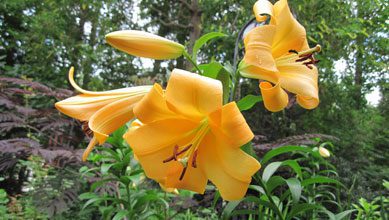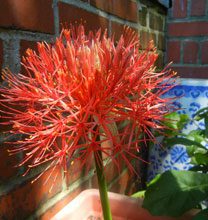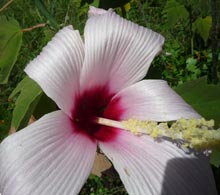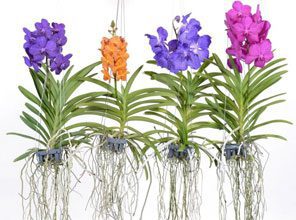 A couple of years ago in these pages, I wrote of ghosts - both spectral and historical - we have come across in our old farmstead in what was once the Carolina backcountry in the upper coastal plain near Augusta and Orangeburg. The old homeplace has been sitting there for some two hundred years; it is hardly surprising that a couple of centuries of hard-working folks should leave behind evidence of themselves and their lives, and we are often pleased to discover some artifact of the farm’s past buried in the soil or even to be visited by the occasional inexplicable apparition.
A couple of years ago in these pages, I wrote of ghosts - both spectral and historical - we have come across in our old farmstead in what was once the Carolina backcountry in the upper coastal plain near Augusta and Orangeburg. The old homeplace has been sitting there for some two hundred years; it is hardly surprising that a couple of centuries of hard-working folks should leave behind evidence of themselves and their lives, and we are often pleased to discover some artifact of the farm’s past buried in the soil or even to be visited by the occasional inexplicable apparition.
Only a few of these hints of the past have been about the gardens around the farmstead. The old trees, of course, have been here for much more than a hundred years, although it is likely that the land around the farmhouse had been stripped of almost all trees from the beginning, the better to provide acreage for crops and lumber for the buildings.
The immediate surrounding yard would have had a low picket fence, inside of which the bare ground would have been swept daily. Ornamental plantings would likely comprise only a few isolated specimen plants, perhaps a large and showy clump of Spanish Bayonet (Yucca gloriosa or Y. aloifolia), or a clump of the ancient white “Cemetery Iris,” Iris albicans. There were certainly daffodils planted in circles around the saplings that would become these aging oaks and hickories that we cherish now.
It would have been much later in the farm’s existence that ornamental plantings would have been introduced, although the mistress of the farm doubtless would grow pass-along plants in old tin cans on the porch. Once the farm brought in income sufficient to expand, fancy shrubs like camellias and gardenias were planted around the property and pecans were planted in groves.
The remnants of these horticultural episodes define much of the character of this farm today. The pecan grove is close enough to help shade much of the yard, and it provides a handsome space where there would have been an open field between the house and the nearby road. The great old camellias bloom faithfully each winter and spring, and the rest of the year, they are strikingly beautiful green mounds twice as tall as I am.
Our antique daffodils never fail to bloom, sometimes announcing the arrival of spring as early as November or December, and they have naturalized into the occasionally-mown lawn which has taken the place of the former swept yard of yore.
These are some of the ghosts of the place, remnants of the lives lived here over the centuries. There are others, less obvious and harder to find, and we cannot know what ghosts have by now left without a trace. There are a few sprigs of ragged old Liriope that crop up, and there are some handsome shrubs of the wonderful native Beautyberry, Callicarpa americana, that are so perfectly located that I wonder if perhaps they were planted deliberately, dug from the woods and placed so as to enjoy their spectacular violet-purple show along the driveway.
Imagine my surprise and pleasure several mornings ago when I got in my truck to run some errands. As I drove out the driveway, I spotted out the corner of my eye a flowering stalk beyond the muscadine grape arbor, behind the old Camellia sasanqua, under a tree next to where I remember the old chicken coop stood some fifty years ago. I pulled over and got out to check on this new strange thing appearing where nothing had been before, except perhaps for a few weeds in the summer.
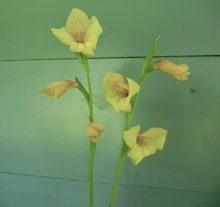 Once I got near, it was obvious that it was a gladiolus, but quite different to the standard garden glads we see today – those tall spikes of unimaginably brilliant flowers, so full and crowded together on the spike that they defy belief. They also, these modern glads, seem inextricably associated with funeral wreaths and floral-arrangements-by-wire.
Once I got near, it was obvious that it was a gladiolus, but quite different to the standard garden glads we see today – those tall spikes of unimaginably brilliant flowers, so full and crowded together on the spike that they defy belief. They also, these modern glads, seem inextricably associated with funeral wreaths and floral-arrangements-by-wire.
Instead, this was a more delicate bloom, not doubled and full of petals, but rather a flower of simple form with one of the petals reaching over the out-facing throat like an extended awning protecting the beesÃÃâ entrance to the nectar. The color was the softest primrose-yellow, tinged with bits of red and even a little green. And the spike - for indeed it still retained the essence of a gladiolus – spaced each flower separately along the stalk, not all crowded into a frothy mass of color.
I had never seen this here before, nor had I encountered the variety in any garden. Obviously, I had not planted it. The location suggested it was either a reappearing remnant from old plantings around the farmyard or possibly grown from a seed left by a bird or another animal. Since no gardens nearby have such gladioli in them, I decided that this (and adjacent, the other six plants not yet in bloom) was a ghost from the farmÃÃâs past. I must have just missed its bloom in past years and never had paid attention to the unmistakable foliage in this spot.
A little research rewarded me with its identity. For many years, this old variety – introduced into America in the early 1800s - had gone by the name Gladiolus primulinus, named obviously for its primrose color. It seems recent analysis has discovered it is a variation of its sister plant long known as Gladiolus psittacinus, the Parrot gladiolus, which first appeared in America at about the same time. Both are now called Gladiolus dalenii.
As it happens, I’ve long admired the Parrot glad; it grows rambunctiously in roadside ditches and fine gardens, equally happy in either place. Its orange-yellow-green flower spikes are readily spotted where road-maintenance equipment has dragged a few of the little corms, and a clump of them appears in short order.
There’s one other of these seriously-old gladiolus varieties that appears every now and then,  Gladiolus byzantinus, the Byzantine glad. Having read about these old glads, the byzantine glad, with spikes of incredibly hot violet-purple bloom, seems to be the one the writers describe as the most common. I have seen a few plantings of it, but for a plant described as a ubiquitous escapee from cultivation, I almost never find it growing in fields or along roadsides. Instead, it’s the old Parrot glad that seems to appear almost everywhere I look. Even though the Primrose glad is also supposedly very common, IÃÃâve not found other examples before either.
Gladiolus byzantinus, the Byzantine glad. Having read about these old glads, the byzantine glad, with spikes of incredibly hot violet-purple bloom, seems to be the one the writers describe as the most common. I have seen a few plantings of it, but for a plant described as a ubiquitous escapee from cultivation, I almost never find it growing in fields or along roadsides. Instead, it’s the old Parrot glad that seems to appear almost everywhere I look. Even though the Primrose glad is also supposedly very common, IÃÃâve not found other examples before either.
All three of these are superbly tough garden plants, and they often will do far better if completely ignored instead of carefully nurtured. They are not available through normal garden channels, although native plant suppliers will sometimes stock them even though they are not natives. Their simple forms and un-stylish colors make them very special to me, and - like the antique roses and old-fashioned garden chrysanthemums – vastly preferable and more attractive than the overly bred modern super plants.
Our ghosts here at the farm still appear. When we’re lucky, they allow us a glimpse into our predecessors’ lives and yield to us a tiny sense of the pleasures they enjoyed in long-gone days. They also spur more than a little curiosity, and finding the stories attached to them is a joy in itself.
N.b. For the reader who wants to peruse the first story about ghosts on the farm – including one absolutely real one – the online version of Lowcountry Weekly has an easily searched archive of earlier articles written by my colleagues Laura Lee Rose and Alice Massey, as well as by me. That first article was published May 5, 2015.

